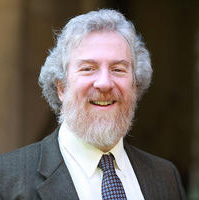Mizmor LeDavid (Psalm 23)—Time, Text, Melody

Psalm 23 is beloved in much of the English-speaking world for affirming a certainty of the divine presence—even in times of dread and adversity—in the most hauntingly beautiful language. The paean to the Psalm by 19th-century American pastor Henry Ward Beecher is widely cited. “The twenty third psalm is the nightingale of the Psalms. It is small, of a homely feather, singing shyly out of obscurity; but oh! it has filled the air of the whole world with melodious joy, greater than the heart can conceive” (Life Thoughts).
It is interesting to me then that this psalm has not found its way into any regular part of our fixed liturgy. In contemporary times, perhaps influenced by surrounding culture and faith communities, it is frequently included at funerals and in the Yizkor (memorial) service. The metaphor of God’s presence “in the valley of the shadow of death” (b’gey tzalmavet) is so lyrically compelling, and fresh to the contemporary ear, that the varied liturgies for the end of life seem like a natural context.
More interesting perhaps is the embrace of the Psalm at the third meal of Shabbat, se’udah shelishit, where it is sung along with other poems that guide the individual toward the divine—not in philosophical reflection or covenantal command, but in love and yearning. In this context, the critical metaphors are “You have anointed my head with flowing oil,” suggesting the merging of physical and spiritual delight on Shabbat, and the final words “and I will dwell in the House of God for Eternity.”
The final hours of Shabbat look toward the messianic future, to the time when all will be one; in the ‘Amidah for Shabbat afternoon, the text speaks of the most profound tranquility, evoking the deep and universal peace for which we yearn in a busy and troubled world. (Siddur Sim Shalom for Shabbat, 236). The phrase “nafshi yeshovev” (You restore my soul) hangs enigmatically between the weekly power of Shabbat to restore our spiritual life, and the hope/promise of an ultimate restoration in the messianic future.
The grammar of our psalm reflects (anticipates) the profound shift between description and encounter that we find also in the structure of blessings and in the poem Adon Olam (see my earlier commentary). The opening speaks about God in the third person—“God is my Shepherd”—but in the time of challenge, “in the valley of the shadow of death,” the psalmist speaks not about God, but to God: “Atah imadi”(You are with me). This is perhaps a more challenging poem than we first think—it is certainly lyrical, certainly of faith, but born out of dark times in a challenging world. In fact, it is a very contemporary teaching from an ancient book.
In the online version of this commentary, you will find connections to several fascinating commentaries to this psalm and a diverse array of renderings of the text. I would be most interested to hear from readers about their own relationship to the text, and to the musical settings.
This reflection was stimulated by listening to an encounter with Rabbi Ben Zion Shenker broadcast on NPR last week. One the most popular and beloved melodies for Psalm 23 was composed by Rabbi Shenker; we hear his personal reflections.



